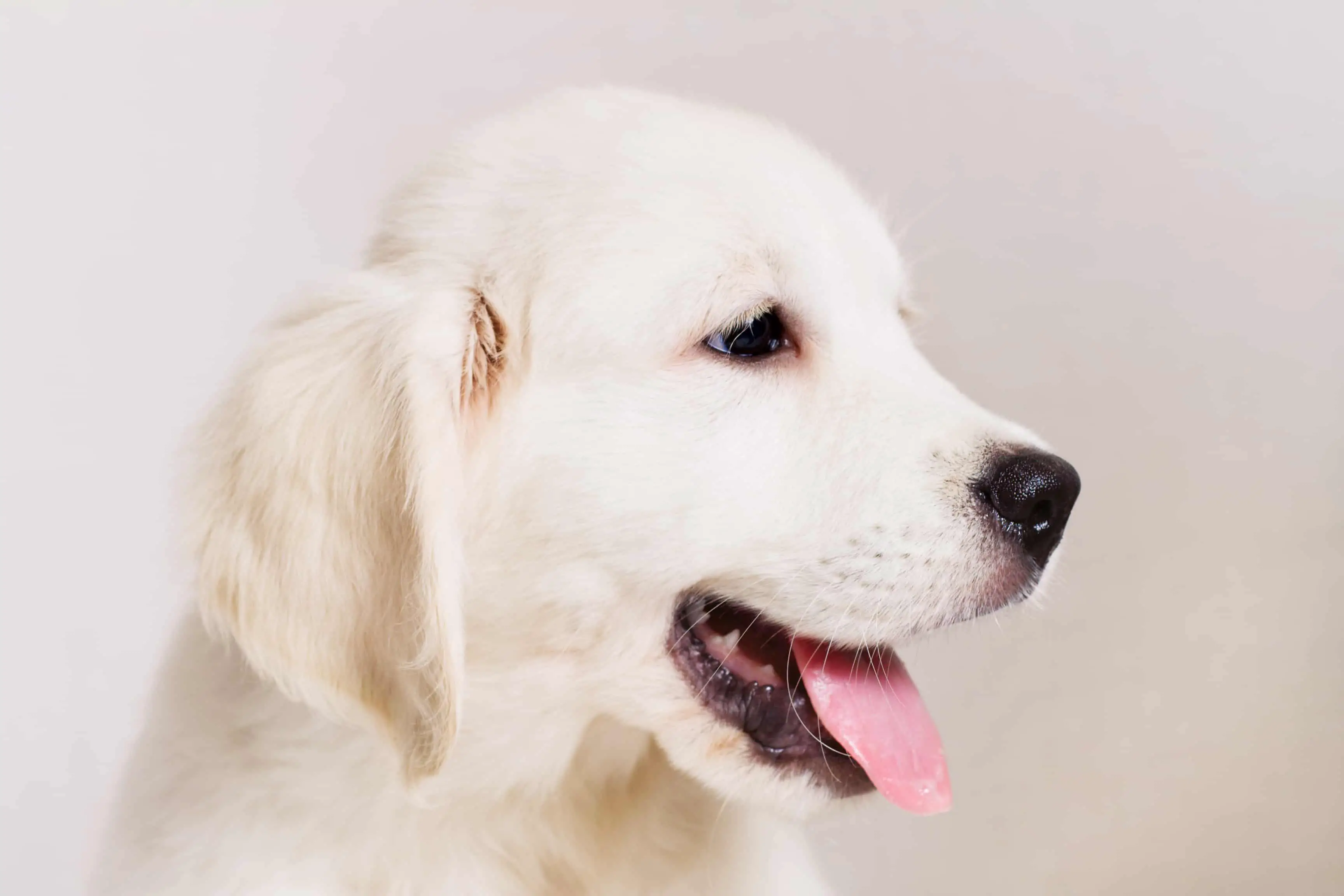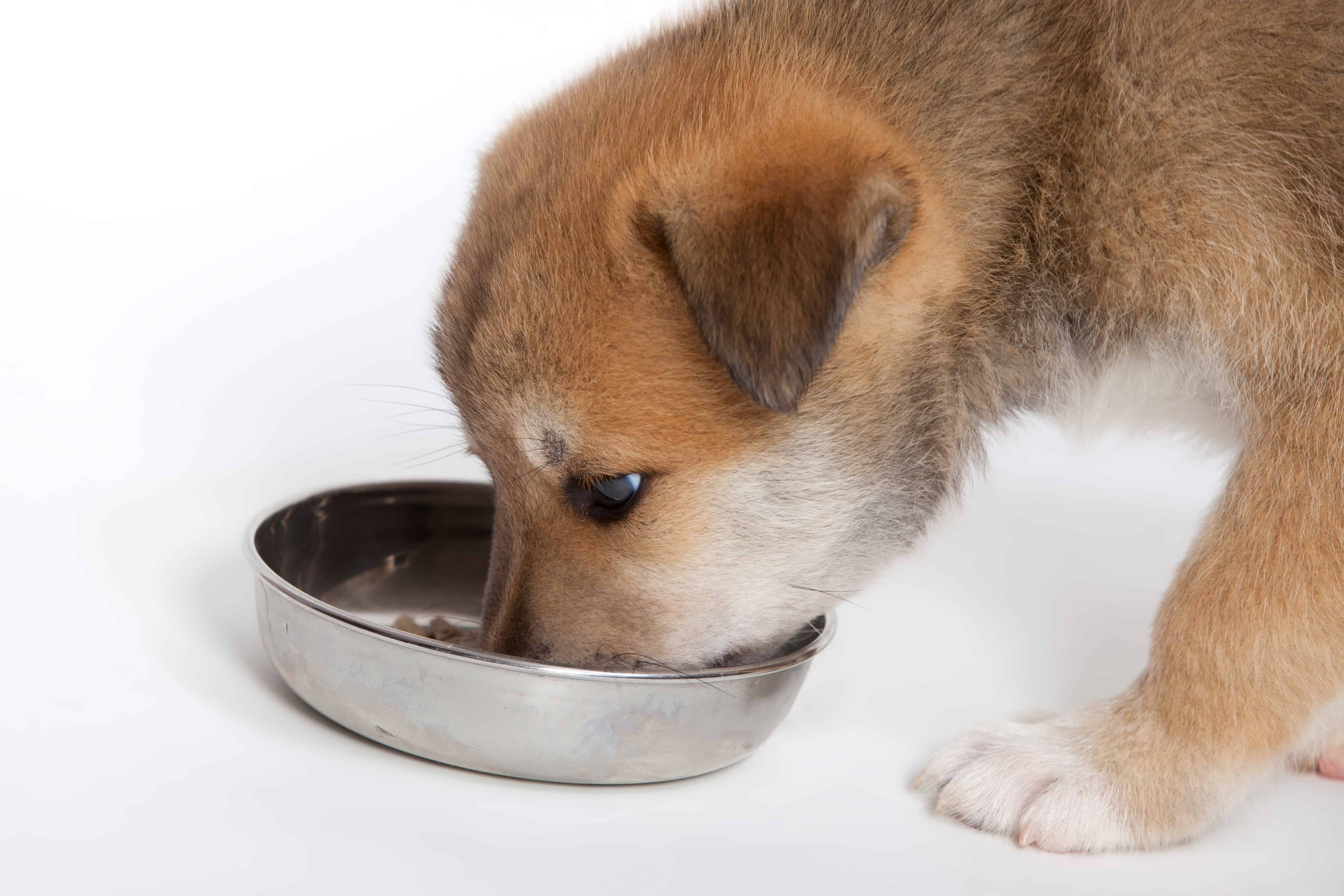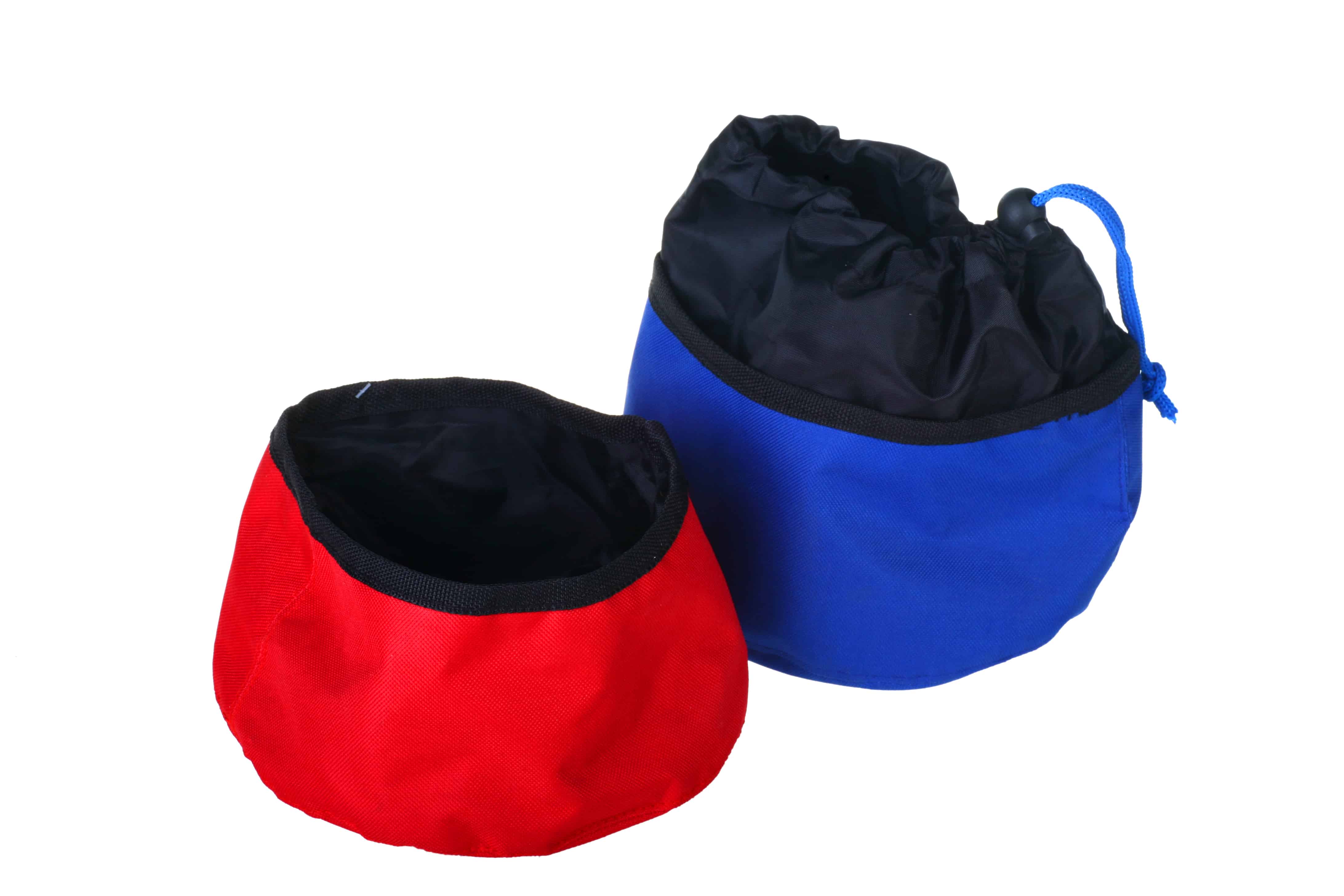As a dog owner, you often think of questions like this— is it safe for my puppy to eat fruit?, If my puppy eats fruit can it lead to long term health problems?
Well to answer these questions, fruits and vegetables, are perfectly safe but some are very unhealthy and downright dangerous to dogs.
Dogs digest differently than humans , eating the wrong food can lead to long term health problems and in extreme cases death. As carnivores they have no need for fruit and vegetables in their diet but an occasional fruit treat is OK.
Puppy Toxic Foods
What age can Puppies eat fruit?
Puppies can start eating fruit and vegetables from about six weeks old.
Foods toxic to adult dogs are also toxic to puppies.
Here’s a list of puppy toxic foods:
Onions, Garlic and Chives
These vegetables and herbs can cause gastrointestinal irritation and could lead to red blood cell damage. Dogs are at risk if a large enough amount is consumed. Toxicity is normally diagnosed through history, clinical signs and microscopic confirmation of Heinz bodies.
Onions contain compounds called disulfides and thiosulphates which can be toxic dogs if ingested. The ingestion of onions causes conditions called hemolytic anemia, heinz body anemia, and methemoglobinemia which are all manifestation of damage to red blood cells.
Essentially, the compounds in onion can cause the red blood cells circulating through your pet’s body to become very fragile and burst.
Symptoms of this condition include early-onset vomiting and diarrhea, along with symptoms of anemia–breathlessness, lethargy, pale, yellow, or “muddy” colored gums, rapid breathing, and an elevated heart rate.
Your pet also could develop abdominal pain and discolored urine. While vomiting and diarrhea may occur within one day, it may take several days to a week after your pet eats onions for symptoms of anemia to appear.
Are all onions dangerous to pets? Yes. All onions — whether cooked or raw or even free-dried — are a danger to your pet. It takes a small amount of onions to poison your dog.
Consumption of as little as 30 g/kg in dogs has resulted in clinically important red blood cell damage.
Caffeine
Dogs are more sensitive to caffeine than we are.Caffeine poisoning in dogs is the result of dogs ingesting caffeine, whether it’s from coffee or other caffeinated substances, or chocolate. A stimulant to the central nervous system.
The degree of toxicity is determined by the amount of caffeine ingested as well as the size and health status of the pet. A large, young, healthy pup will likely have a better outcome than a small, old dog with kidney problems. But, regardless of age or size, caffeine can damage major organs like the liver, heart, kidneys, lungs, and central nervous system.
Caffeine is commonly found in tea, energy drinks, coffee, soda , chocolate and diet pills.
Signs and symptoms of toxicity are:
- Vomiting
- Excessive thirst and urination
- Abnormal heart rhythm
- Elevated heart rate
- Elevated body temperature
- Seizures and collapse
Xylitol
Xylitol is used as a sweetener in many products, including gum, candy, baked goods and toothpaste. It can cause insulin release in animals, which can lead to liver failure. The increase in insulin leads to hypoglycemia (lowered sugar levels).
Initial signs of toxicosis include vomiting, lethargy and loss of coordination. Signs can progress to seizures. Elevated liver enzymes and liver failure can be seen within a few days.
Salt and salty foods
Large amounts of salt can produce excessive thirst and urination, or even sodium ion poisoning in pets. Signs that your puppy may have eaten too many salty foods include vomiting, diarrhea, depression, tremors, elevated body temperature, seizures and even death.
As such, we encourage you to avoid feeding salt-heavy snacks like potato chips, pretzels, and salted popcorn to your puppy.

Our puppy Umbra loves salty foods, but knows that it’s no good for her
Alcohol
Alcoholic beverages and food products containing alcohol is toxic to your puppy. Even small amount of alcohol in puppies can cause life threatening toxicity. Keep in mind that all alcoholic beverages should be off-limit to pets.
As in humans, when a dog or cat is exposed to alcohol it causes depression of their central nervous system. Its effects on a pet’s nervous system are similar to those of humans in many ways. A dog slows down, becomes drowsy and loses coordination.
If they’re exposed to higher levels of alcohol it can depress their nervous system to the point that their breathing and heart rate slow down. Their body temperature drops. Their blood chemistry is also altered, leading to a dangerous condition called metabolic acidosis where the blood becomes too acidic.
At this point, without treatment, death soon follows usually due to cardiac arrest. Even if a dog or cat doesn’t die from the acute effects of alcohol poisoning, the toxin can still harm their kidneys and liver, reducing quality of life over time.
Signs and symptoms of alcohol poisoning are:
- Vomiting
- Diarrhea
- Decreased coordination
- Central nervous system depression
- Difficulty breathing
- Tremors
- Abnormal blood acidity
- Coma and death
Grapes and Raisins
Although the toxic substance within grapes and raisins is unknown, grapes can cause poisoning, toxic reactions, and even death in dogs and raisins can lead to kidney problems in your dog. If your dog consumes one grape by accident you don’t need to rush him to the vet.
Gender, breed, or age of a dog has no influence on the risk of being affected, and since there is no proven amount that is safe, you shouldn’t be giving your pup grapes or raisins at all.
Here are the signs and symptoms that may occur after a toxic ingestion:
- Loss of appetite
- Weakness
- Unusual stillness
- Vomiting and/or diarrhea
- Abdominal pain
- Dehydration (signs include panting; dry nose and mouth; pale gums)
- Increased thirst and urinating
- Kidney failure
Yeast
Just like yeast rises in bread, it will also expand and rise within your pup’s tummy. Make sure they don’t get any. While mild cases will cause gas, lots of farting and discomfort — too much of it could rupture their stomach and intestines. Yeast dough is also dangerous because as it ferments and rises it makes alcohol which can lead to alcohol poisoning.
Raw Meat & Fish
Raw meat and fish can have bacteria which causes food poisoning. Additionally, some fish can contain a parasite that causes “fish disease” or “salmon poisoning disease.”
Symptoms include vomiting, fever and enlarged lymph nodes. Cooked fish is perfectly fine since the parasite is killed during the cooking process.
Cherries
The pits, stems, and leaves of cherries all contain cyanide, which is toxic and can cause poisoning in dogs if consumed in large quantities. Although the amount of cyanide in one or two cherries probably isn’t enough to do serious damage, there is no need to risk poisoning when there are plenty of alternatives to cherries that can provide the same health benefits your dog might get from them. Cherry pits can also get lodged in a dog’s digestive tract and cause intestinal blockages.
Rhubarb and tomato leaves
These contain oxalates, which can cause, drooling, vomiting, diarrhea, lethargy, weakness, tremors and bloody urine.
Walnuts and Macadamia
There are super toxic to dogs. After 12 hours from ingesting these nuts a dog may experience hyperthermia, vomiting, and might not be able to stand. May also cause kidney failure that may lead to death.
Strawberries or Bananas?
With all of these foods toxic to your dog you are probably wondering if your dog can eat strawberries and bananas. The good news is ‘yes’ strawberries and bananas are super OK for your dog.
Bananas are a great and heart healthy treats for dogs. They are also a good source of potassium, vitamin B6, vitamin C, biotin and copper. Bananas are low in sodium and cholesterol, but high in fiber, which is great for digestion and can remedy gastrointestinal problems. Bananas contain magnesium, too, which promotes bone growth and aids the body in absorption of protein and vitamins.
But, like all other foods bananas may cause gastric upset in some dogs. Feed your dog a slice or two at first to make sure it’s not causing any stomach issues. Bananas also contains lots of sugar, so dogs shouldn’t eat a diet of bananas. Banana for dogs are fines as a snack option, but you should not use them more than moderately.
How to feed your dog bananas
Before you feed your dog any bananas, consult your veterinarian. They can tell you the right amount of bananas for your specific dog based on their dietary needs and weight. If your veterinarian gives you the okay, there are several ways you can feed bananas to your dog.
Here are a few favorites:
- Freeze them, peel them, cut them up, and give your dog a refreshing, frozen treat. These are especially nice on a hot summer day, and they’re super easy to prepare.
- Mash them up and stir them into your dog’s food. Your dog might love the sweet flavor and enjoy a change of pace from their regular meal.
- Smush them and stuff them in a toy, Kong, or puzzle feeder. This will give your dog some mental and physical stimulation and help reduce boredom.
- Mix them in a treat recipe. You can find plenty of recipes for banana dog treats by searching online. Some favorite things to mix bananas with include peanut butter (make sure it doesn’t have or yogurt, but you should also ask your vet before feeding your dog these foods.
- Fresh fruit helps with aging, strengthens the immune system and helps with weight management. Removing the high fat, salty snacks also helps with your pup’s teeth.
Strawberries are full of antioxidants. They also boast high fiber and a lot of vitamin C. Strawberries even contain an enzyme that can help whiten your dog’s teeth. Just don’t feed unlimited amounts, because even though the sugar in strawberries is natural sugar, too much can cause health problems.
How to feed your dog strawberries
It is recommended you cut the fruit up in small pieces to avoid choking and for easier digestion. You can mash it up and add it to the dog food they normally eat.
Puppy treats
The best puppy treats are those specifically designed for puppies which not only taste good, but contain the vitamins and minerals that a puppy needs for growth and healthy teeth and coat.
However, be careful of high fat, high sugar items that humans consider to be treats such as chocolates, biscuits and ice cream as these are not good for a puppy’s digestion or his weight in the long term. If your puppy happens to like carrots or apples then that’s fine.

Tips on puppy treats
- Always buy treats that are for puppies. Don’t adult dogs treats or children treats for your puppy.
- Choose the best treats that you can afford from well known manufacturers with good reputations.
- The best puppy treat contains all the natural ingredients good for puppies health, vitality and growth— such as meat, fruit, vegetables.
- Consider the size and texture of the treat. Don’t buy anything to big or hard for your puppy.
- Puppies have special nutritional needs. While they may enjoy the same food we do, a little can go a long way. People food for puppies isn’t necessarily terrible, especially in small amounts. Too much can replace the balanced nutrition they need.
When giving your dog people treat, know that what’s healthy for you is also healthy for your puppy as well.
- Lean meat: Small amounts of turkey, chicken, and lean beef are good, but you should avoid ham as it may be too rich for a puppy’s digestion. Be sure you do not give your dog any meat that contains cooked poultry bones or ham bones, which can splinter.
- Veggies: cooked or raw vegetables such as broccoli, asparagus, kale greens, spinach and carrots ,can be great treats.
- Fruit: Be sure not to give your puppy fruits toxic to them and when giving them fruit, remove the pits and seeds that can cause blockages or indigestion.
- Many dogs like peanut butter. Your dog can eat peanut butter as long as it is fed in moderation and does not contain xylitol. You can give peanut butter as treat to your puppy.
Conclusion
Don’t overdo it! There are many great treats and fruits out there that your puppy will love. However, you should always feed them in moderation. Too much can be hurtful to your dog, so try sticking to the basics when feeding your dogs.
Also, try avoiding the toxic items we have listed in this post. You should avoid having nuts or similar foods in accessible places, in case there is a risk that your dog gets its jaws around it. Finally, There is no reason to experiment to an extreme extent with your dogs diet. They are not gourmands!
Related Articles
5 Unknown Puppy Hacks That Changed How We Do Dog Breeding
We are confident that some of these tricks can only be learned through sheer luck or by experience. Here we share…
Is Dry Food Really The Best Dog Food For Your Puppy?
We at Puppyton recently got asked: Is dry food the best food option for you little puppy? We have combined our experience with a bit of research and found everything you should know about dry food before making any decision. There are many great food alternatives for...
Collapsible Dog Bowls: The Ultimate Guide
Traditionally, foldable dog bowls were looked upon with skepticism since they were new ''smart'' technology that would change how it ''used to work''. Even I was skeptical at one point in time, believing that these new bowls would be unstable, fragile and unsafe for...
Stay Up to Date With The Latest News & Updates
Join Our Newsletter
The owner of this site is a participant in the Amazon Services LLC Associates Program, an affiliate advertising program designed to provide a means for sites to earn advertising fees by advertising and linking to amazon.com.



